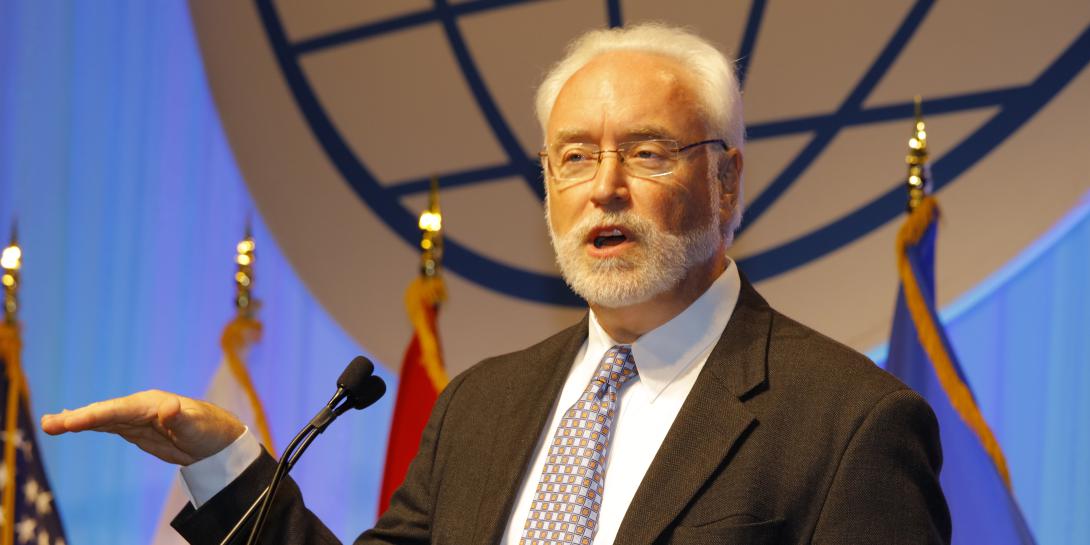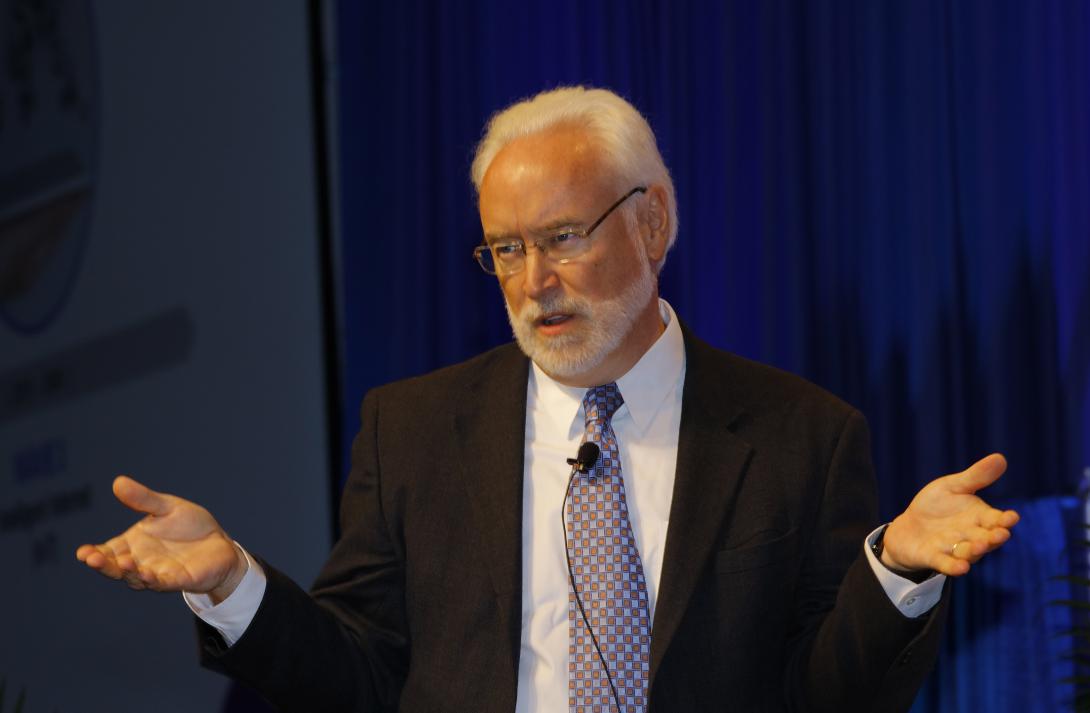Age of Acceleration is Radically Changing Networks
The constant acceleration of technology is pushing for radical changes in the networking arena, tapping systems to continuously scale capacity and connectivity.
The constant acceleration of technology is pushing for radical changes in the networking arena, tapping systems to continuously scale capacity and connectivity.
The assessment might sound like a daunting problem. It's not, offered the morning keynote speaker on the final day of AFCEA International's Defensive Cyber Operations Symposium, or DCOS. “If you’re in the networking space, get ready: It’s going to be an interesting ride,” said Stephen Alexander, senior vice president and chief technology officer at Ciena.
A historical analysis, however, reveals this is not the first time the nation has faced substantial change on the industrial and technology fronts, he said. “It just turns out, every time we do this, it gets faster, it gets taller and has more implications.”
This change isn't different -- it just keeps getting faster & faster, @Ciena's CTO shares at #AFCEACyber
— Sandra Jontz (@jontz_signalmag) June 15, 2017
The world rapidly is moving from manually provisioned static connections to one of real-time orchestrated services. In the digital networking space, the ecosystem sits at the beginning of what Alexander called the “intelligent Internet,” which will drive a whole new set of requirements.
Networks today are being reimagined like never before, said Alexander, who has been granted 18 patents. The fact that users can put virtual machines on top of physical machines has proven rather disruptive. “Just think about the number of virtual machines sitting inside of your smartphone: a virtual machine for GPS, for a calendar, for all different things that you used to have physical devices for.”
Connected users today are experiencing a convergence toward seamless services. Gone is the concept of operating on a residential network versus a commercial one, he said. “What you’re after is the same consistent user experience throughout, wherever you go. You get on a plane, you want the same experience as when you get off.”
Future shaped by taking the best of IT & Telecom technology and they are converging, @Ciena's Stephen Alexander shares at #AFCEACyber
— Sandra Jontz (@jontz_signalmag) June 15, 2017
Those expectations also drive the growth of data center capacity. For the first time, companies such as Facebook and Microsoft have forged a partnership to put their own deep sea, underwater cables in place to connect their customers globally—offering 160 terabits per second capacity. “And that’s not going to be enough if you look at where they really want to go,” Alexander said.
He presented a global digital snapshot of key statistical indicators of world’s Internet, mobile and social media uses from January. Here are some of the key numbers:
- 7.476 billion people
- 3.773 billion Internet users
- 2.789 billion active social media users
- 8.047 billion mobile subscriptions
- 2.549 active mobile social users
The number of mobile subscriptions is greater than the population, he notes. “There are more machines talking on the network now than there are people on the network,” he said. “That’s your Internet of Things. We are in an absolute on-demand, app-driven world. That’s what everybody wants.”
Today, there are more machines talking on the #network than there are people on the #Internet, @Ciena's Alexander - #AFCEACyber
— Sandra Jontz (@jontz_signalmag) June 15, 2017
Out at the edge of the network is where users will encounter the future fifth generation, or 5G, capabilities. “5G is a fascinating set of changes that have been put in place, if you think about what is going on here,” Alexander said. “A very simple way to get your arm around this thing is to say the edge of network gigabits today is roughly gigabits in the first order. … Think about taking a gigabit to every handset in the world.”
Networks will need to offer more capacity, connections and capabilities; be smarter in terms of architecture, scaling and analytics; and be faster in terms of implementation, revenue and restoration.
All because in a mere three years, industry projections say the ecosystem must be able to accommodate 4 billion connected people accessing 25 more more million apps sharing some 50 trillion gigabytes of data—all raking in an estimated $4 trillion of revenue opportunity.






Comments